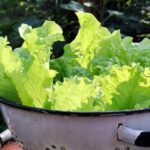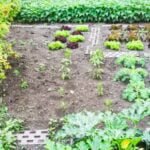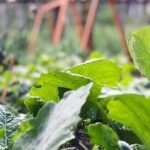Cotton burr compost is a popular choice for gardeners looking to enrich their vegetable gardens with organic matter. Many people wonder, “Is cotton burr compost good for vegetable gardens?” This article will explore the benefits of using cotton burr compost in vegetable gardens and provide valuable information on its nutrient content, how to use it, and which vegetables thrive best with this type of compost.
Cotton burr compost, derived from the hulls of cotton seeds after the ginning process, is an excellent organic fertilizer that contains essential nutrients for plant growth. It is known for its ability to improve soil structure and promote healthy root development in plants. Gardeners often choose cotton burr compost for its ability to enhance soil fertility and provide long-term benefits to their vegetable gardens.
When considering the use of cotton burr compost in your vegetable garden, it’s important to understand its nutrient content and how it can benefit your crops. Additionally, knowing how to properly use cotton burr compost and which vegetables are best suited for this type of fertilizer will help maximize its effectiveness in your garden.
In the following sections, we will delve into these aspects and offer insights on comparing cotton burr compost with other compost options, as well as tips for purchasing and using it effectively. Whether you’re a seasoned gardener or new to organic gardening practices, understanding the role of cotton burr compost in vegetable gardens is essential for making informed decisions about your garden’s health and productivity.
Benefits of Using Cotton Burr Compost in Vegetable Gardens
Cotton burr compost is a popular choice for many gardeners, and for good reason. This type of compost is made from the hulls of cotton seeds, which are rich in organic matter and nutrients. The use of cotton burr compost in vegetable gardens offers several benefits that can contribute to healthier plants and better yields.
One of the main benefits of using cotton burr compost in vegetable gardens is its ability to improve soil structure. The organic matter in the compost helps to loosen heavy soils, improve drainage in clay soils, and increase water retention in sandy soils. This creates a more favorable environment for plant roots to grow and thrive.
In addition to improving soil structure, cotton burr compost also adds valuable nutrients to the soil. It contains significant amounts of nitrogen, phosphorus, potassium, and other essential micronutrients that are essential for healthy plant growth. These nutrients are released slowly as the compost breaks down, providing a steady supply of food for vegetable crops throughout the growing season.
Lastly, cotton burr compost serves as a natural weed suppressor, helping to keep unwanted plants at bay while also providing insulation against extreme temperatures. With all these benefits considered, it is evident that using cotton burr compost is a good choice for those looking to enhance their vegetable gardens with an organic and sustainable solution.
| Benefits | Description |
|---|---|
| Improved Soil Structure | The organic matter in cotton burr compost helps loosen heavy soils and improve drainage. |
| Nutrient-Rich | Contains nitrogen, phosphorus, potassium, and other essential nutrients for healthy plant growth. |
| Weed Suppression | Natural weed suppressor that keeps unwanted plants at bay while providing insulation against extreme temperatures. |
Nutrient Content of Cotton Burr Compost
Cotton Burr Compost is a popular choice for gardeners looking to enrich their soil and promote healthy plant growth. It is made from the hulls of cotton seeds, which are a byproduct of the textile industry. This compost is known for its rich nutrient content and ability to improve soil structure, making it an excellent choice for vegetable gardens.
One of the key benefits of using cotton burr compost in vegetable gardens is its nutrient content. Cotton burr compost is an excellent source of organic matter, which helps to improve soil fertility and promote healthy root development in vegetable plants. Additionally, it contains essential nutrients such as nitrogen, phosphorus, and potassium, which are vital for plant growth.
When using cotton burr compost in your vegetable garden, it’s important to understand its nutrient content in order to properly support the needs of different types of vegetables. Here are some key nutrients found in cotton burr compost:
- Nitrogen: Essential for leafy green vegetables like lettuce and spinach
- Phosphorus: Important for root development in vegetables such as carrots and potatoes
- Potassium: Necessary for fruit production in plants like tomatoes and peppers
Incorporating cotton burr compost into your vegetable garden can provide a natural and sustainable source of nutrients that will benefit your plants throughout the growing season. By understanding its nutrient content, you can make informed decisions about how to use this compost to support the specific needs of your vegetable crops.
How to Use Cotton Burr Compost in Vegetable Gardens
Cotton burr compost, which is made from the hulls of cotton seeds, is an excellent choice for enriching the soil in your vegetable garden. When used properly, it can improve soil structure and provide essential nutrients to support healthy plant growth. Here are some guidelines on how to effectively use cotton burr compost in your vegetable garden.
Preparing the Soil
Before applying cotton burr compost to your vegetable garden, it’s important to prepare the soil properly. Start by clearing the area of any weeds or debris, then loosen the soil with a rake or shovel. Spread a layer of cotton burr compost evenly over the soil surface, and then use a tiller or garden fork to work it into the top few inches of soil.
Amending Planting Holes
When planting vegetables, you can also use cotton burr compost to amend the individual planting holes. Simply mix a small amount of compost with the existing soil in each hole before placing the plant or seeds. This will help provide immediate nutrition and support strong root development for your vegetables.
Top Dressing
In addition to mixing cotton burr compost into the soil, you can also use it as a top dressing around established vegetable plants. Apply a thin layer of compost around the base of each plant, being careful not to cover any foliage. This will help retain moisture, suppress weeds, and gradually release nutrients into the soil as it decomposes.
Overall, using cotton burr compost in your vegetable garden is an effective way to improve soil quality and promote healthy plant growth. By following these simple guidelines for application, you can maximize the benefits of this natural fertilizer and enjoy a bountiful harvest from your garden.
Best Vegetables to Grow With Cotton Burr Compost
Cotton burr compost is a fantastic option for enriching the soil in your vegetable garden. It is an organic material that is created from the hulls of cotton seeds, making it an environmentally friendly choice for gardeners. The nutrient-rich composition of cotton burr compost makes it an ideal choice for promoting healthy growth in a variety of vegetables.
When considering which vegetables to grow with cotton burr compost, it’s essential to focus on those that thrive in nutrient-dense soil. Leafy greens such as lettuce, spinach, and kale are excellent options, as they benefit from the high nitrogen content found in cotton burr compost. Other vegetables that do well with this type of compost include tomatoes, peppers, and squash. These crops will all appreciate the well-balanced nutrient profile that cotton burr compost provides.
Additionally, root vegetables like carrots and radishes can also benefit from the use of cotton burr compost due to their need for loose, fertile soil. By incorporating this type of compost into your vegetable garden, you can create an optimal environment for growing a wide range of nutritious and delicious produce.
| Vegetable | Reasons for Growing With Cotton Burr Compost |
|---|---|
| Lettuce | Benefits from high nitrogen content |
| Tomatoes | Thrives in well-balanced nutrient profile |
| Carrots | Benefit from loose and fertile soil provided by the compost |
Comparing Cotton Burr Compost With Other Compost Options
When considering compost options for your vegetable garden, it is important to compare and contrast the different types available. One popular option is cotton burr compost, but how does it stack up against other compost choices? In this section, we will explore the advantages and disadvantages of using cotton burr compost compared to other compost options.
Benefits of Cotton Burr Compost
Cotton burr compost offers several benefits for vegetable gardens. It has a high water retention capacity, which can be beneficial in maintaining soil moisture levels for vegetables.
Additionally, cotton burr compost is known for its ability to break up heavy clay soils and improve soil structure, making it easier for vegetables to grow healthy root systems. Its slow decomposition rate also means that the nutrients in cotton burr compost are released gradually over time, providing long-lasting nourishment for vegetable plants.
Comparing With Other Compost Options
In comparison to other compost options such as manure or kitchen scraps, cotton burr compost may have a lower nutrient content. However, its ability to improve soil structure and moisture retention can make it a valuable addition to vegetable gardens.
On the other hand, manure-based compost typically has higher nitrogen content, which may be beneficial for leafy greens and other nitrogen-hungry vegetables. Kitchen scraps can provide a diverse range of nutrients but may not have the same impact on soil structure as cotton burr compost.
Considerations for Choosing Compost
When choosing between different compost options for your vegetable garden, consider the specific needs of your plants as well as the characteristics of your soil. If you have heavy clay soils or struggle with moisture retention, cotton burr compost may be a good choice.
However, if you are looking to boost nitrogen levels in your soil, manure-based compost could be more suitable. Ultimately, understanding the unique benefits and drawbacks of each type of compost will help you make an informed decision for your vegetable garden.
Tips for Buying and Using Cotton Burr Compost
When it comes to buying and using cotton burr compost for your vegetable garden, there are a few tips to keep in mind to ensure that you get the most out of this organic material. First and foremost, always look for high-quality cotton burr compost from reputable suppliers. This will ensure that you are getting a product that is free from contaminants and rich in nutrients that will benefit your vegetable plants.
When purchasing cotton burr compost, be sure to check the nutrient content listed on the packaging. Look for compost that is high in nitrogen, phosphorus, and potassium, as these essential nutrients will help promote healthy growth in your vegetable garden. Additionally, look for compost that is well-aged and has a rich, earthy smell, as this indicates that it has broken down properly and is ready to use.
Once you have purchased your cotton burr compost, it’s important to use it correctly in your vegetable garden. Be sure to mix the compost thoroughly into the soil before planting your vegetables. This will help improve soil structure and fertility, providing a healthy growing environment for your plants. It’s also important to use cotton burr compost in moderation – too much can actually harm your plants by altering the pH of the soil or causing excessive nutrient levels.
By following these tips for buying and using cotton burr compost in your vegetable garden, you can ensure that you are getting the most out of this organic material and providing optimal growing conditions for your vegetables. With proper selection and application of cotton burr compost, you can enjoy a bountiful harvest of healthy, nutritious produce from your garden.
Conclusion
In conclusion, after examining the benefits, nutrient content, and best practices for using cotton burr compost in vegetable gardens, it is clear that cotton burr compost is indeed a good choice for vegetable gardens. The natural properties of cotton burr compost make it an excellent option for improving soil quality and promoting healthy plant growth. Its ability to retain moisture and suppress weeds makes it an ideal choice for vegetable gardening.
One of the major benefits of using cotton burr compost in vegetable gardens is its nutrient-rich composition. This organic material provides essential nutrients to the soil, including nitrogen, phosphorus, and potassium, which are crucial for the development of healthy vegetables. Additionally, the slow-release nature of these nutrients ensures a steady supply throughout the growing season.
When considering whether cotton burr compost is suitable for your vegetable garden, it’s important to remember that each garden has unique needs. However, based on its numerous benefits and nutrient content, cotton burr compost is a versatile option that can enhance the health and productivity of your vegetable garden. Whether you’re a novice or experienced gardener, incorporating cotton burr compost into your gardening routine can lead to bountiful harvests of delicious and nutritious vegetables.
Frequently Asked Questions
Is Cotton Burr Compost Good for Tomatoes?
Cotton Burr Compost can be good for tomatoes due to its ability to improve soil structure, retain moisture, and provide essential nutrients. It’s important to ensure the compost is well-aged before using it.
Is Cotton Burr Compost Good for Garden?
Cotton Burr Compost can benefit a garden by enriching the soil with organic matter, enhancing its ability to support plant growth, improving drainage, and promoting beneficial microbial activity. It’s a sustainable option for soil improvement.
Does Cotton Burr Compost Have Pesticides?
Generally, properly processed and cured cotton burr compost should not contain pesticides. However, it’s crucial to obtain the compost from a reputable source and inquire about any potential pesticide use in the cotton production process.

If you’re looking to get into vegetable gardening, or are just looking for some tips on how to make your current garden better, then you’ve come to the right place! My name is Ethel and I have been gardening for years. In this blog, I’m going to share with you some of my best tips on how to create a successful vegetable garden.





